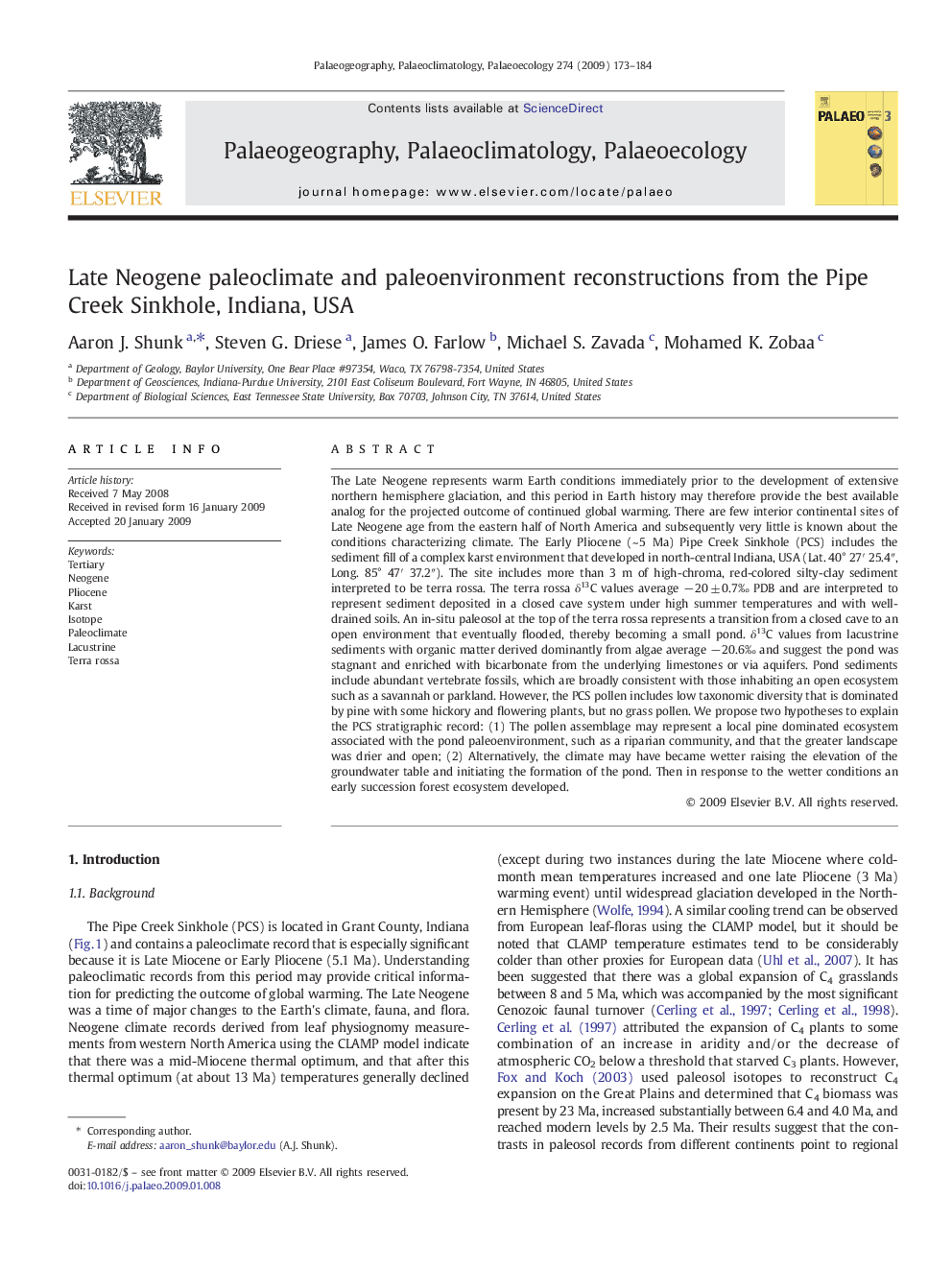| کد مقاله | کد نشریه | سال انتشار | مقاله انگلیسی | نسخه تمام متن |
|---|---|---|---|---|
| 4468067 | 1622305 | 2009 | 12 صفحه PDF | دانلود رایگان |

The Late Neogene represents warm Earth conditions immediately prior to the development of extensive northern hemisphere glaciation, and this period in Earth history may therefore provide the best available analog for the projected outcome of continued global warming. There are few interior continental sites of Late Neogene age from the eastern half of North America and subsequently very little is known about the conditions characterizing climate. The Early Pliocene (~ 5 Ma) Pipe Creek Sinkhole (PCS) includes the sediment fill of a complex karst environment that developed in north-central Indiana, USA (Lat. 40° 27′ 25.4″, Long. 85° 47′ 37.2″). The site includes more than 3 m of high-chroma, red-colored silty-clay sediment interpreted to be terra rossa. The terra rossa δ13C values average − 20 ± 0.7‰ PDB and are interpreted to represent sediment deposited in a closed cave system under high summer temperatures and with well-drained soils. An in-situ paleosol at the top of the terra rossa represents a transition from a closed cave to an open environment that eventually flooded, thereby becoming a small pond. δ13C values from lacustrine sediments with organic matter derived dominantly from algae average − 20.6‰ and suggest the pond was stagnant and enriched with bicarbonate from the underlying limestones or via aquifers. Pond sediments include abundant vertebrate fossils, which are broadly consistent with those inhabiting an open ecosystem such as a savannah or parkland. However, the PCS pollen includes low taxonomic diversity that is dominated by pine with some hickory and flowering plants, but no grass pollen. We propose two hypotheses to explain the PCS stratigraphic record: (1) The pollen assemblage may represent a local pine dominated ecosystem associated with the pond paleoenvironment, such as a riparian community, and that the greater landscape was drier and open; (2) Alternatively, the climate may have became wetter raising the elevation of the groundwater table and initiating the formation of the pond. Then in response to the wetter conditions an early succession forest ecosystem developed.
Journal: Palaeogeography, Palaeoclimatology, Palaeoecology - Volume 274, Issues 3–4, 15 April 2009, Pages 173–184